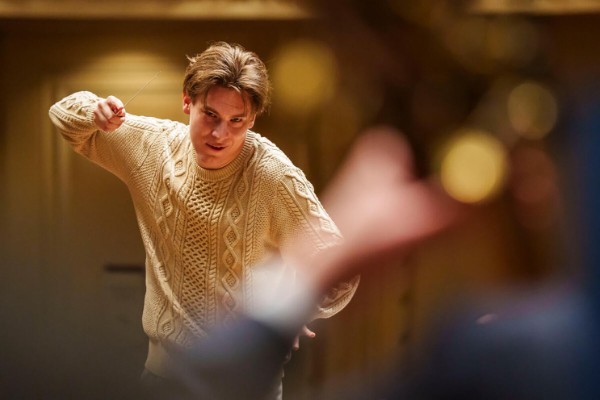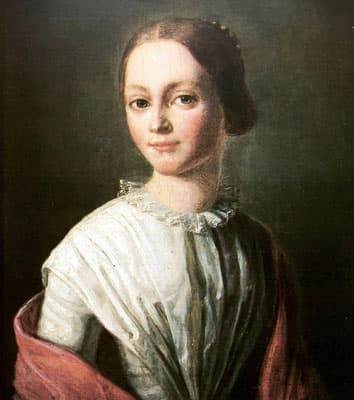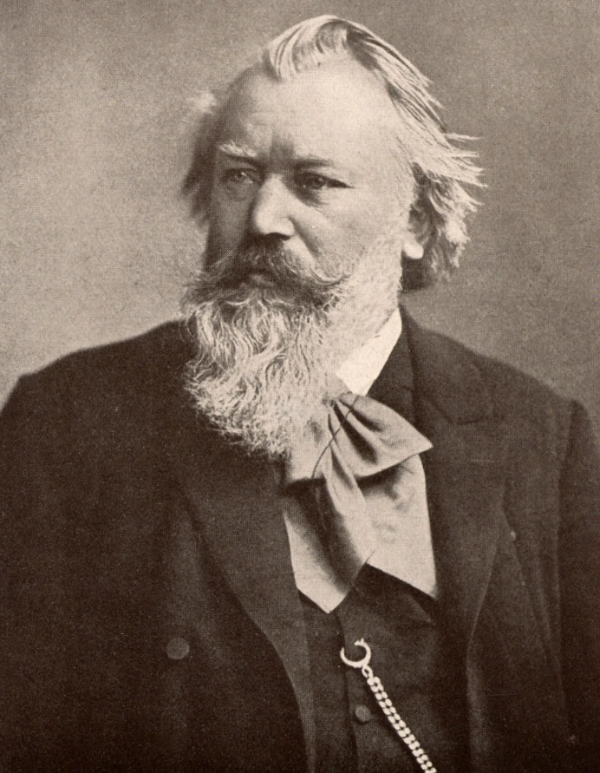Composer Dmitri Shostakovich had a tumultuous professional life, surviving discouragement and denunciation by the Soviet government over a period of decades.
He also had a tumultuous personal life. He was married three times to three very different women: Nina Varzar, Margarita Kainova, and Irina Antonovna Spunskaya.
The stories of these relationships provide valuable insight into Shostakovich’s psychology, work, and music. Today, we’re looking at the lives of all three women.
Nina Varzar
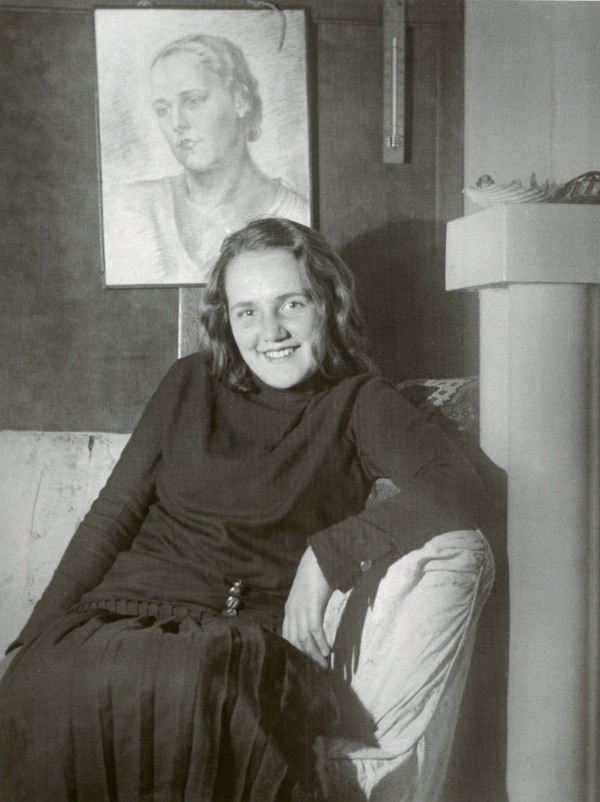
Nina Varzar Shostakovich
Nina Varzar was born in August 1908, the youngest of three daughters born to a lawyer father and an astronomer mother.
As a young woman, she enrolled as a student at the Physics and Mathematics Department of Leningrad University. After graduation, she became an experimental physicist.
She met Dmitri Shostakovich while on vacation in 1927, the year she turned nineteen. She was athletic and musical, and interested in singing and dancing.
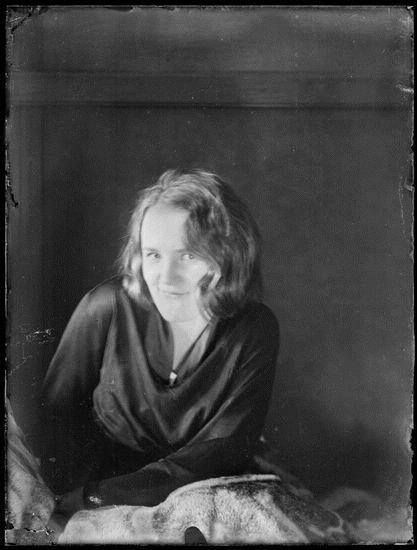
Nina Varzar Shostakovich
The two dated on and off over the next few years. (Shostakovich was famously flaky when it came to commitment, and Nina’s family wanted her to graduate from college before getting married.) After a cancelled ceremony, they finally wed in 1932.
Shostakovich’s 24 Preludes, written between 1932 and 1933
They didn’t tell either of their families about the wedding until after it happened. When they found out, Shostakovich’s family was horrified. Shostakovich’s sister wrote to their aunt, “I feel I cannot tell you properly what has happened – but what composed and made up our happiness has ended.”
Nina moved into the Shostakovich family apartment in May 1932. In December, Shostakovich finished his opera Lady Macbeth of the Mtsensk District. He dedicated it to Nina.
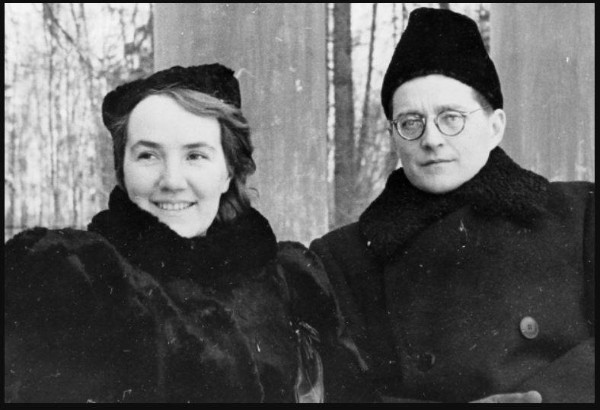
Shostakovich and Nina
Unfortunately, their idyllic relationship wouldn’t last for long. In 1934, Shostakovich fell in love with a translator named Elena Konstantinovskaya, and he began appearing with her at social functions. Nina asked for a divorce, and Shostakovich agreed.
They were divorced and Shostakovich made plans to relocate to Moscow. However, while he was making arrangements to move, Nina told him that she was pregnant. They chose to remarry and raise the baby together.
Lady Macbeth of the Mtsensk District
Halfway through her pregnancy, one of the most consequential – and dangerous – incidents of Shostakovich’s professional life occurred.
In January 1936, Joseph Stalin came to a performance of Lady Macbeth. He left with his entourage before the opera was over.
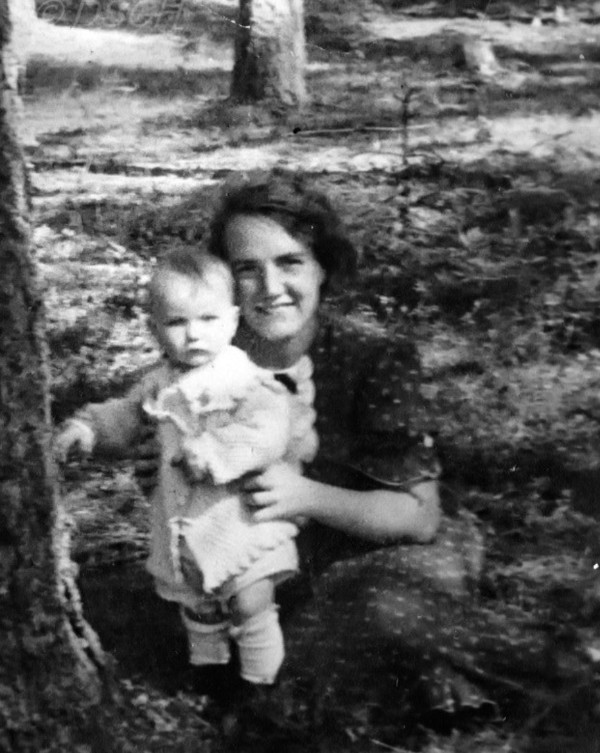
Nina Shostakovich and Galina
Shostakovich knew that Stalin’s disapproval meant terrible things for his life and career. When he took his bows at the end of the performance, he was white as a sheet.
Two days later, on 28 January, Pravda – the official newspaper of the Communist Party – denounced Lady Macbeth, labelling it “vulgar” and “formalist.” The Great Purge was beginning, Stalin was consolidating his power by wielding it over cultural figures, and Shostakovich became dangerous to associate with.
Dmitri and Nina’s daughter, Galina Shostakovich, was born in May 1936. Two years later, in 1938, they had a son named Maxim.
Having children together and enduring the stress and trauma of the Great Purge bonded the couple. In 1936, Shostakovich wrote to a friend, “There can be no question of a divorce from Nina. I have only now realised and fathomed what a remarkable woman she is, and how precious to me.”
Shostakovich’s Symphony No. 4, finished in 1936
Over the years, the Shostakoviches had an open marriage; both pursued relationships with other people, but always returned to each other.
Nina continued her work as a physicist. She made annual visits to an Armenian research station that would last for several months at a time.
She also served as her husband’s secretary and household director, in addition to her role as mother. She helped to manage his time and ensure he had the privacy and support he needed to compose.
Unfortunately, tragically, in December 1954, while working in Armenia, Nina’s health took a sudden and unexpected turn. She underwent surgery for a colon tumour, fell into a coma after the surgery, and never woke up. She was buried on 10 December 1954.
Romance from Shostakovich’s soundtrack to The Gadfly, 1955
Margarita Kainova
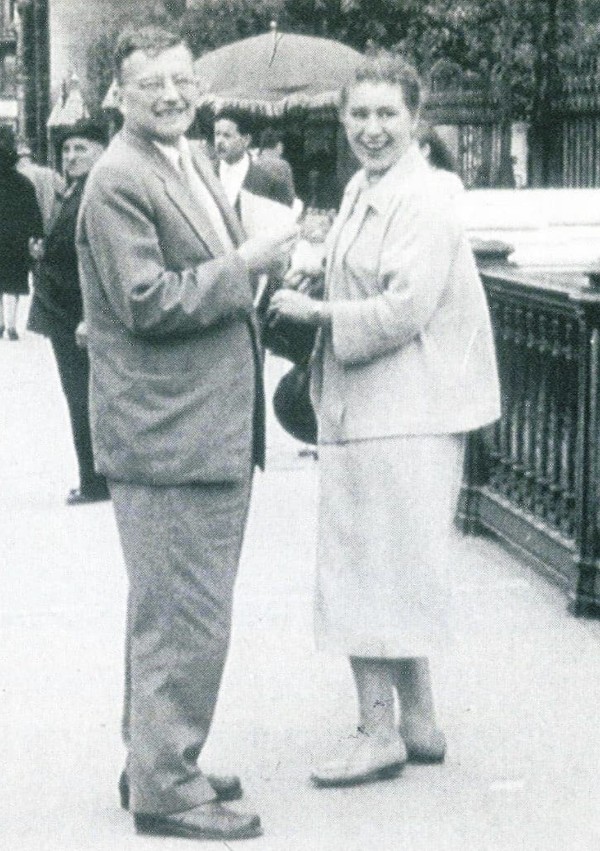
Shostakovich and Margarita Kainova
Shostakovich was deeply affected by the loss of his wife. He told his friend Edison Denisov, “If only you knew how hard my life is now.”
Early in the summer of 1956, Shostakovich saw a woman in her early thirties at the World Festival of Youth, a competition run by the Komsomol, the youth division of the Communist Party in the Soviet Union. She bore more than a passing physical resemblance to Nina. Her name was Margarita Kainova.
He was taken by her, but was too shy to introduce himself, so he bought two tickets to the opera and asked a friend, Lev Lebedinsky, to deliver the spare to her home. Shostakovich showed up at the opera the next day to find that his seatmate was a man – presumably her brother.
However, he did finally make contact with Margarita. He invited her to his home and, astonishingly, proposed to her. Perhaps even more surprisingly, she accepted.
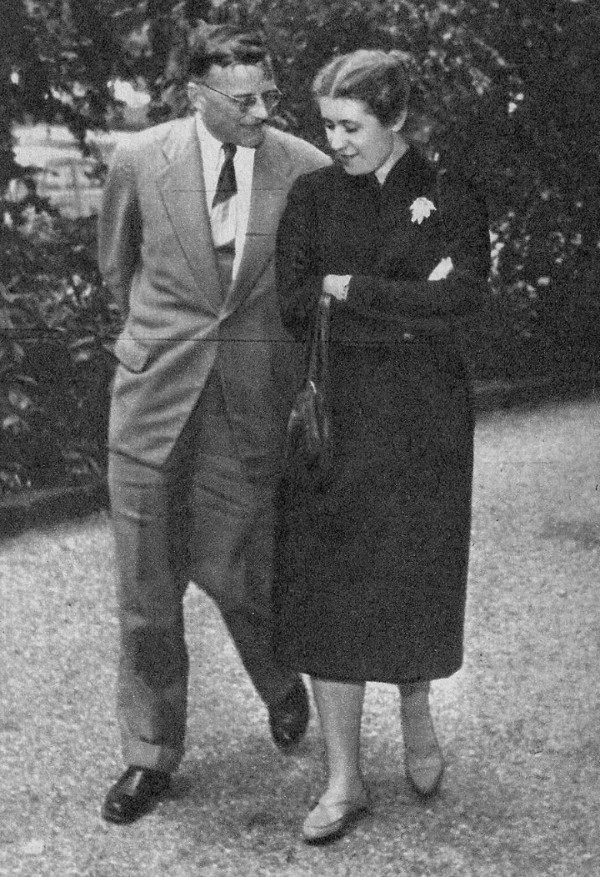
Shostakovich and Margarita Kainova
They were married in secret and only told their friends and family after the fact. Everyone was incredulous.
Shostakovich’s sixth string quartet, written in the summer of 1956
From the start, the two proved to be incompatible. Kainova openly disliked Shostakovich’s more complex music, and she didn’t get along well with his friends or his children.
Shostakovich’s friend Flora Litvinova wrote:
“She is terribly uninteresting, and there is something horse-like about her. She tries terribly hard to please everybody, from the guests to the children, and to adopt the right tone. But goodness, how vapid and unpleasant she is – particularly after Nina.”
At one point, sick of her complaints about his family, Shostakovich made a dark joke to her: “Why don’t we kill the children? Then we can live happily ever after.” She thought he was serious.
The relationship was doomed. They began divorce proceedings in 1959.
In 1960, he wrote his seventh string quartet and dedicated it to the memory of Nina…a potential acknowledgement that he’d never gotten over her.
Shostakovich’s Seventh String Quartet
Irina Antonovna Spunskaya
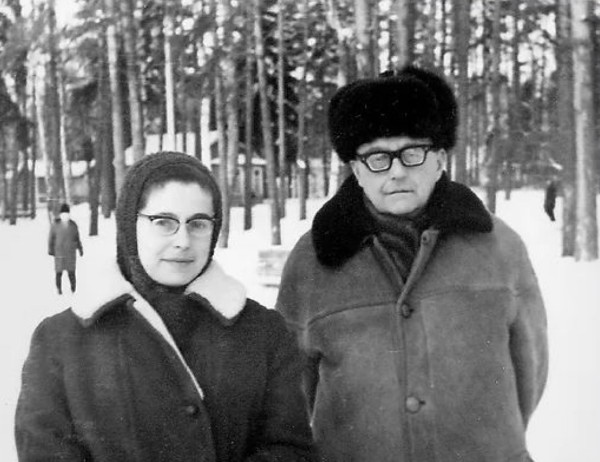
Shostakovich and Irina Antonovna Spunskaya
In 1961, Lev Lebedinsky introduced him to a young employee named Irina Supinskaya. She was an editor of song lyrics and libretti.
Irina’s background was tragic. She was orphaned as a child, losing family during the Great Purge, siege of Leningrad, and World War II. She was married to an older man when she met Shostakovich, but he pursued her anyway.
Initially, he was concerned about their age difference (Shostakovich was fifty-five and she was twenty-seven). However, the relationship blossomed anyway.
In June 1961, Shostakovich wrote to a friend:
“An event of great importance has happened in my life… My wife is called Irina Antonovna. She has one small defect: she’s only twenty-seven years old. In every other respect, she is sweet, clever, gay, simple, and lovable. She wears glasses and can’t pronounce her l’s and r’s.”
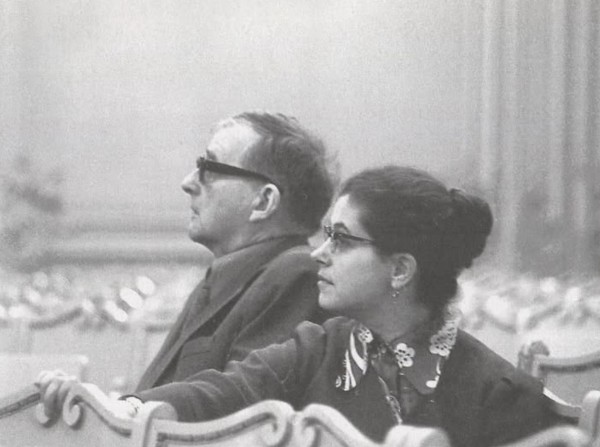
Shostakovich and Irina, 1974
Lebedinsky was leery about the match:
“Irina took it upon herself to establish a new order in the Shostakovich household. As their life became more bourgeois, their home became open to a different class of guests, which didn’t exclude officials. For this reason, our meetings became rarer, and eventually I decided to terminate our friendship, rather than give in to compromise.”
That said, Lebedinsky also admitted that Irina became a stabilising influence.
Soprano Galina Vishnevskaya wrote about Irina:
“It was with her that Dmitri Dmitriyevich finally came to know domestic peace… Surely, she prolonged his life by several years.”
Shostakovich’s viola sonata, his final work, written in 1975
Irina stayed by Shostakovich’s side as he dealt with a variety of health issues, including three heart attacks, two broken legs, and an injured right hand. He once wryly wrote to a friend:
“Target achieved so far: 75% (right leg broken, left leg broken, right hand defective). All I need to do now is wreck the left hand, and then 100% of my extremities will be out of order.”
After Shostakovich’s first heart attack, Irina left her editing job and devoted herself full-time to supporting Shostakovich. She copied his scores and wrote his letters. She even learned how to drive so that he didn’t have to (driving made him nervous). In return, she was often the first person that Shostakovich played works for.
In addition to his neurological issues, he also had heart failure and lung cancer. He died on 9 August 1975 in Moscow with Irina at his side.
As of 2025, Irina Shostakovich is still alive. She has spent her long widowhood supporting her husband’s legacy.
For more of the best in classical music, sign up for our E-Newsletter

